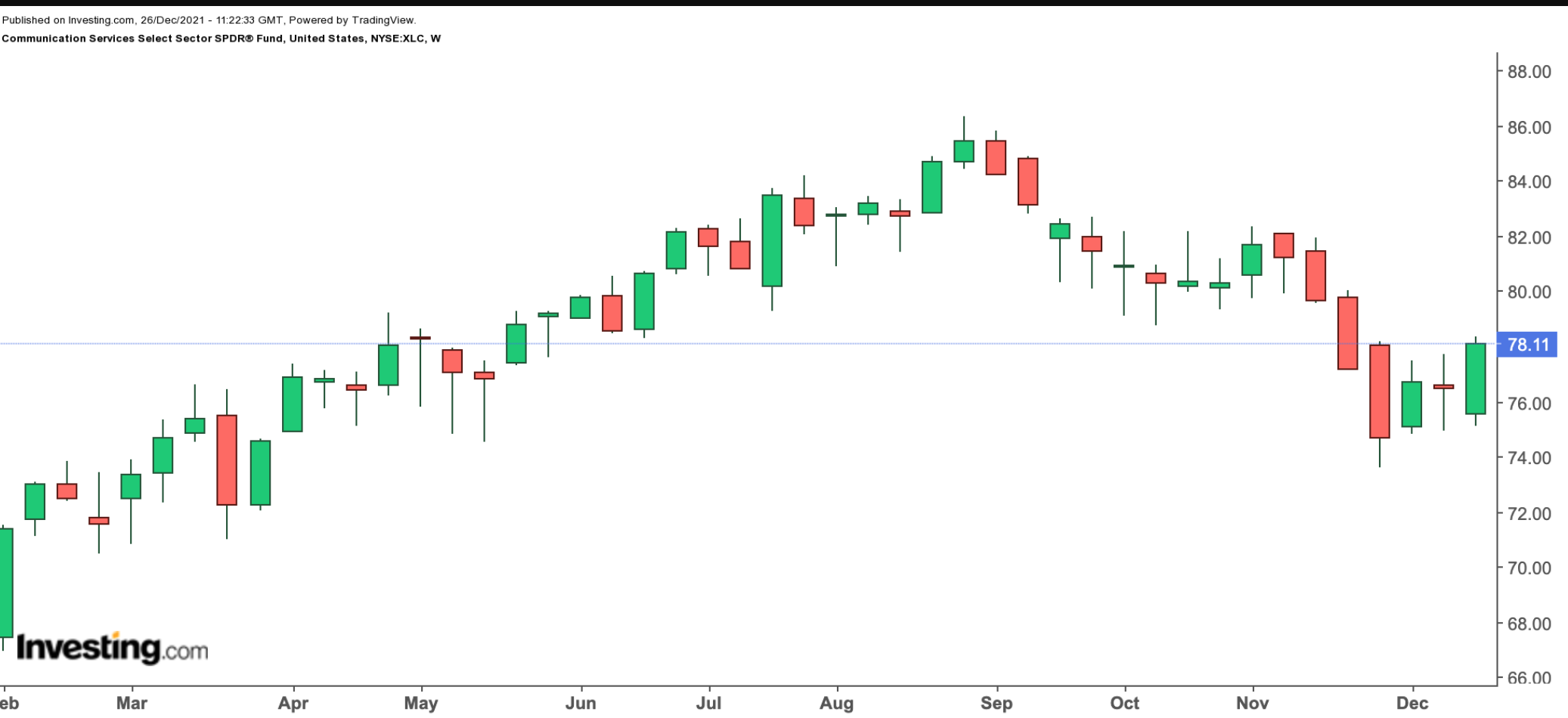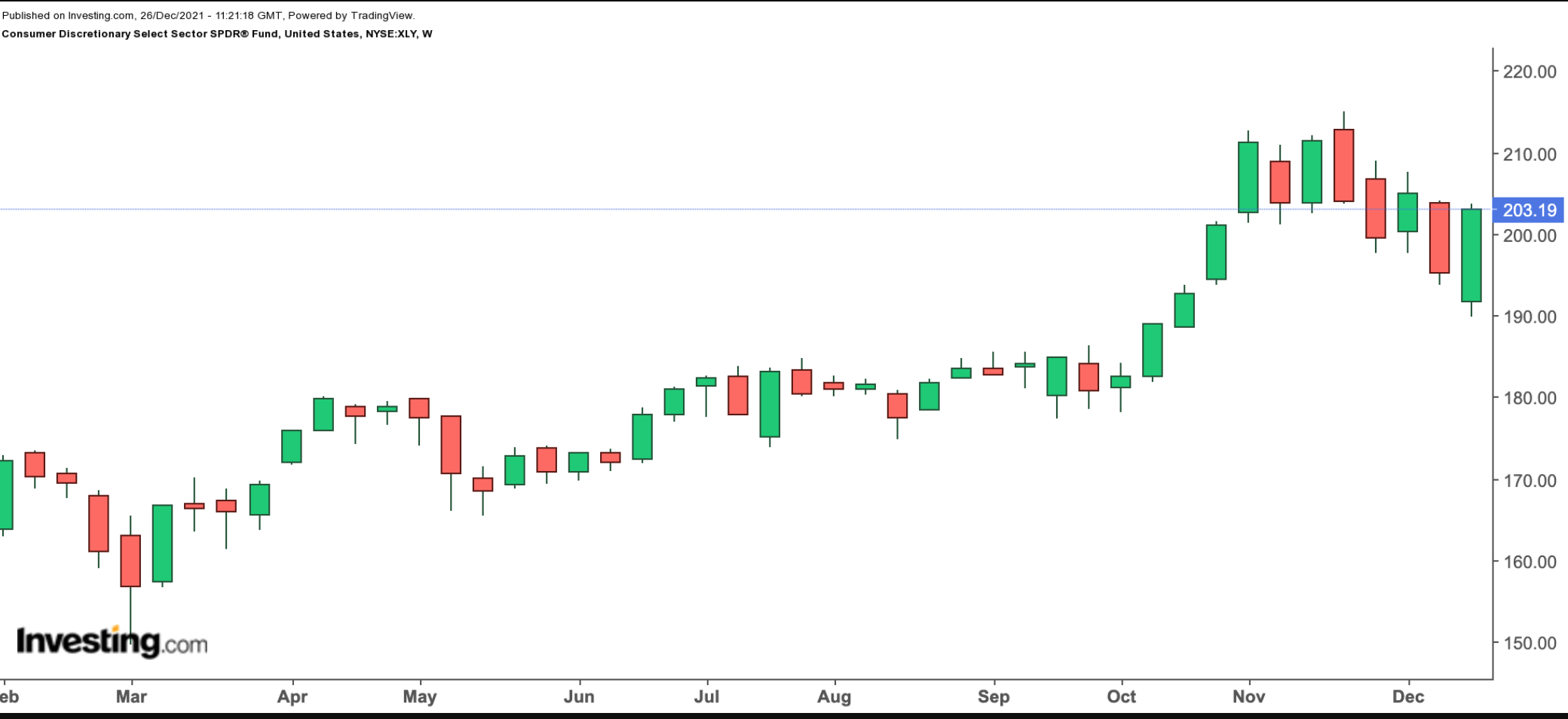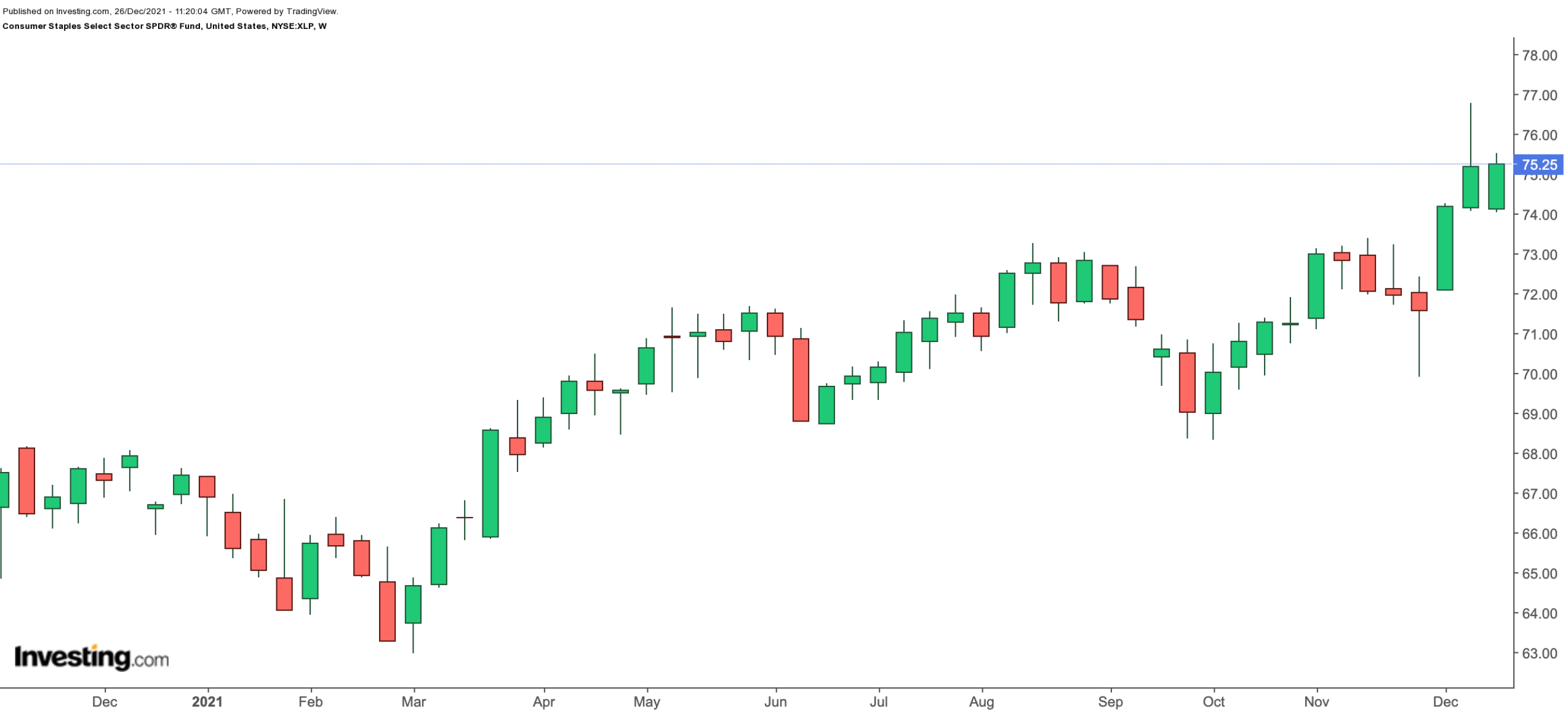We have entered the final stretch of 2021. Therefore, this week, we'll review the S&P 500 index and its 11 sectors, as per the Global Industry Classification Standard (GICS®), which uses a firm's principal business activity to include it in a given sector.
Investors wishing to access the largest publicly-traded 500 companies in the US keep a close eye on the S&P index. It is up 25.8% so far in the year, with a market capitalization (cap) close to $40 trillion. An exchange-traded fund (ETF), like the SPDR® S&P 500 Fund (NYSE:SPY), provides exposure to the full index.
There are also numerous ETFs that invest in the individual industries that comprise the index. In this four-part series of articles this week, we will introduce several ETFs offering access to these 11 sectors. Today we focus on Communication Services, Consumer Discretionary, and Consumer Staples ETFs.
1. Communication Services
Advertising, social media, entertainment, and telecommunications firms are part of the communications services sector. One of the largest ETFs to consider is the Communication Services Select Sector SPDR® Fund (NYSE:XLC).

XLC, which has 27 holdings, started trading in June 2018. The leading names comprise over 70% of almost $14 billion in net assets. In other words, this ETF is top-heavy.
Among the top companies in the fund are household names, including Meta Platforms (NASDAQ:FB), Google's parent company Alphabet (NASDAQ:GOOGL) (NASDAQ:GOOG), AT&T (NYSE:T), Charter Communications (NASDAQ:CHTR), Verizon Communications (NYSE:VZ), T-Mobile US (NASDAQ:TMUS) and Netflix (NASDAQ:NFLX).
Since the start of the year, XLC is up over 15.7%; it hit an all-time high on Sept. 2. However, it has come under pressure and lost over 9% since then.
The current price supports a dividend yield of 0.73%. Trailing P/E and P/B ratios are 20.26 and 3.65. Long-term investors could find value around these levels.
There are also two other sectoral ETFs that deserve to be on readers' watchlists:
- Vanguard Communication Services Index Fund ETF Shares (NYSE:VOX): up 13.5% year-to-date (YTD);
- Invesco S&P 500 Equal Weight Communication Services ETF (NYSE:EWCO): up 14.1% YTD.
2. Consumer Discretionary
When Wall Street becomes concerned about economic cycles, it pays specific attention to consumer discretionary businesses. They can be manufacturers (such as automakers, durable household producers, or textile companies).
Additional names in the sector include leisure services firms (such as restaurants, hotels, casinos, or cinemas). This group also encompasses consumer retailers, including those that focus on the luxury segment.
Our following ETF, the Consumer Discretionary Select Sector SPDR® Fund (NYSE:XLY), invests in shares of businesses in the sector.

XLY, which tracks the returns of the S&P 500 Consumer Discretionary Index, has 61 holdings. The fund was launched in December 1998 and currently has over $23.6 billion under management.
Among the leading names on the roster are Amazon.com (NASDAQ:AMZN), Tesla (NASDAQ:TSLA), McDonald's (NYSE:MCD), Home Depot (NYSE:HD), Lowe's (NYSE:LOW), Starbucks (NASDAQ:SBUX), Target (NYSE:TGT) and Booking (NASDAQ:BKNG). The leading 10 names comprise over 70% of net assets.
The fund returned 26.4% YTD and hit a record high on Nov. 22. The fund's current dividend yield stands at 0.53%. Trailing P/E and P/B ratios are 32.42 and 8.65. Interested readers could consider waiting for a pullback toward the $195 level before hitting the 'buy' button.
Two other potential ETFs to research are:
- Vanguard Consumer Discretionary Index Fund ETF Shares (NYSE:VCR): up 22.9% YTD;
- Fidelity® MSCI Consumer Discretionary Index ETF (NYSE:FDIS): up 22.6% YTD.
3. Consumer Staples
The necessities we buy are defined as consumer staples. So the sector was in the limelight, especially in the early weeks of the pandemic in 2020. Companies in the segment include food, beverage, personal hygiene as well as health product businesses.
Investors who want a slice of the sector's growth could consider buying the Consumer Staples Select Sector SPDR® Fund (NYSE:XLP). It invests in manufacturers and retailers of foodstuff, beverages, household goods and personal items.

XLP, which has 32 stocks, tracks the returns of the S&P 500 Consumer Staples Index. The fund was first listed in December 1998 and currently has close to $13.6 billion in assets under management.
Leading companies in the fund include Procter & Gamble (NYSE:PG), Costco Wholesale (NASDAQ:COST), PepsiCo (NASDAQ:PEP), Coca-Cola (NYSE:KO), Mondelez International (NASDAQ:MDLZ) and Walmart (NYSE:WMT). This is another top-heavy ETF where the top ten stocks make up over 75% of the fund's assets.
YTD, the fund has returned close to 11.6% and saw an all-time high on Dec. 16. XLP's current dividend yield is 2.33%. Trailing P/E and P/B ratios are 22.34 and 6.20. A potential decline toward $73 would improve the margin of safety for long-term investors.
Finally, two other ETFs that could appeal to readers are:
